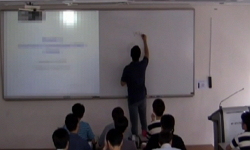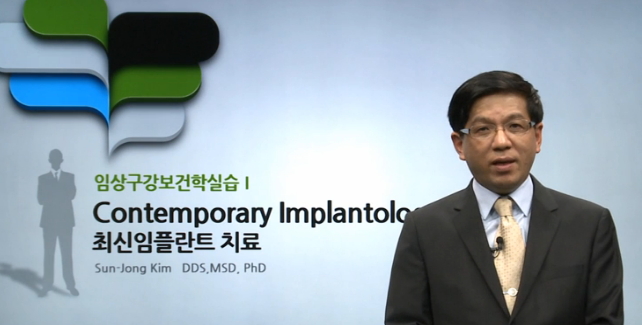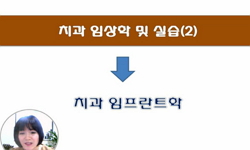The corrosion resistance of metallic implants is essential for successful implant osseointegration. Moreover, the implant surface should have appropriate surface roughness for the attachment of the osteoblast and collagen fibrils. When titanium is exp...
http://chineseinput.net/에서 pinyin(병음)방식으로 중국어를 변환할 수 있습니다.
변환된 중국어를 복사하여 사용하시면 됩니다.
- 中文 을 입력하시려면 zhongwen을 입력하시고 space를누르시면됩니다.
- 北京 을 입력하시려면 beijing을 입력하시고 space를 누르시면 됩니다.

타타늄의 열처리 조건에 따른 동전위 양극분극특성 및 표면 미세구조 변화 = Effect of Heat Treatment Conditions on Dynamic Anodic Polarization Characteristics and Surface Microstructure of Titanium
한글로보기https://www.riss.kr/link?id=A19662609
- 저자
- 발행기관
- 학술지명
- 권호사항
-
발행연도
2002
-
작성언어
Korean
- 주제어
-
KDC
515.12
-
등재정보
KCI등재
-
자료형태
학술저널
- 발행기관 URL
-
수록면
145-156(12쪽)
- 제공처
-
0
상세조회 -
0
다운로드
부가정보
다국어 초록 (Multilingual Abstract)
The corrosion resistance of metallic implants is essential for successful implant osseointegration. Moreover, the implant surface should have appropriate surface roughness for the attachment of the osteoblast and collagen fibrils. When titanium is exposed to air a thermodynamically very stable oxide film is formed at once. This oxide is very thin and yet it protects the metal from corrosion instantaneously. However, the oxide would not be ideal, and it would be supposed that the state of oxide film would be various by the different conditions when it is formed. The objective of this study was to evaluate the electrochemical properties and surface microstructural changes of titanium after passivation treatment or exposure to high heat (in vacuum or in air).
ASTM grade 2 commercially pure titanium (Ti) disks of 10㎜ diameter were wet ground and polished with 240 and 600 grit SiC, and then ultrasonically cleaned with distilled water and ethanol. Cleansed as-received samples (As-R group) were passivated with 30% nitric acid solution at 50℃ for 15 minutes to make the Pas group. The Std-V samples were made by treating the Ti disks in vacuum quartz tube (10^-8 Torr) at 530℃ for 40 min for stress relieving, followed by annealing at 700℃ for 90 min, and then slow cooling to room temperature. The Std-A samples undergo identical procedure as the Std-V group except that it is done in air. For 530℃-V samples, Ti disks were heated at 530℃ for 40 minutes and slow cooled to room temperature. The 1000℃-V samples were produced by heating Std-V specimens again at 1000℃ for 2 hr, followed by cooling to room temperature. 530℃-A and 1000℃-A samples were also prepared.
Potentiodynamic anodic polarization measurement, SEM, AFM and XRD analysis were performed to evaluate the effects of the various treatments.
The difference in the mean values of E_corr between groups showed statistically significant difference (P<0.05), but that of I_corr did not show significance (P>0.05). When Ti surface was passivated there was a shift of corrosion potential (E_corr) in the noble direction and a lower corrosion current density (I_corr) value. Std-A samples showed most noble E_corr value among the tested groups. 530℃-V samples showed more noble E-corr than other tested groups except Std-A group. 1000℃-V samples showed more noble E-corr than those of Std-V sample. In the case of Std-, 530℃- and 1000℃-groups, -A sub-groups showed better corrosion resistant characteristics than -V sub-groups in regard to E-corr and I_corr values. In the SEM observations, the surfaces of the As-R samples showed only scratch line on smooth surface. In Pas samples, thick oxide layer covered the surface under high magnification observation. 530℃-A samples were covered by oxide granules, and Std-A samples had 25~50 nm-thick acicular oxides. The 1000℃-A samples were covered by coarse oxide crystals with a granule diameter of 0.1~0.6 μm having a gross appearance of milky white color, which was identified by XRD as a rutile. On the other hand, 1000℃-V samples showed an Widmansta¨tten structrue of which the orientation of the lattice is formed along crystallographic planes of the parent crystals. On the AFM observation, 530℃-A samples showed RMS roughness of 79.38 nm which is 5 times rougher than those of the As-R samples. Std-A sample had a roughness of 330.47 nm which is about 20-times rougher than that of the As-R sample. 1000℃-A samples were covered by coarse granular oxides and the roughness were about 0.56 μm. Vacuum sub-group samples showed a more smooth surface than air sub-group samples, and the oxide film was more dense.
Due to variability of the surface treatment and heat treatment conditions, the process of the oxide formation seems to be affected thereby making the corrosion properties and surface micro-morphology different. However, more various electrochemical analysis together with surface analysis, and an investigation for the effects of those on the osteoblast cell adhesion and calcium phosphate apposition are needed for the improvement of the osseointegration rates of the titanium implants.
동일학술지(권/호) 다른 논문
-
- 大韓齒科器材學會
- 고제만
- 2002
- KCI등재
-
SiO₂-Li₂O-K₂O-ZnO-ZrO₂계 가압성형 글래스 세라믹의 미세구조와 결정화에 미치는 P₂O₅ 첨가의 영향
- 대한치과재료학회
- 강동진(Dong-Jin Kang)
- 2002
- KCI등재
-
이온교환에 의한 치과용 저온용융형 및 초저온용융형 장석도재의 강화
- 대한치과재료학회
- 박광선(Kwang-Sun Park)
- 2002
- KCI등재
-
LED 광중합기로 중합한 치과용 콤포짓트 레진의 중합수축과 중합도
- 대한치과재료학회
- 이승근(Seung-Keun Lee)
- 2002
- KCI등재




 RISS
RISS DBpia
DBpia





